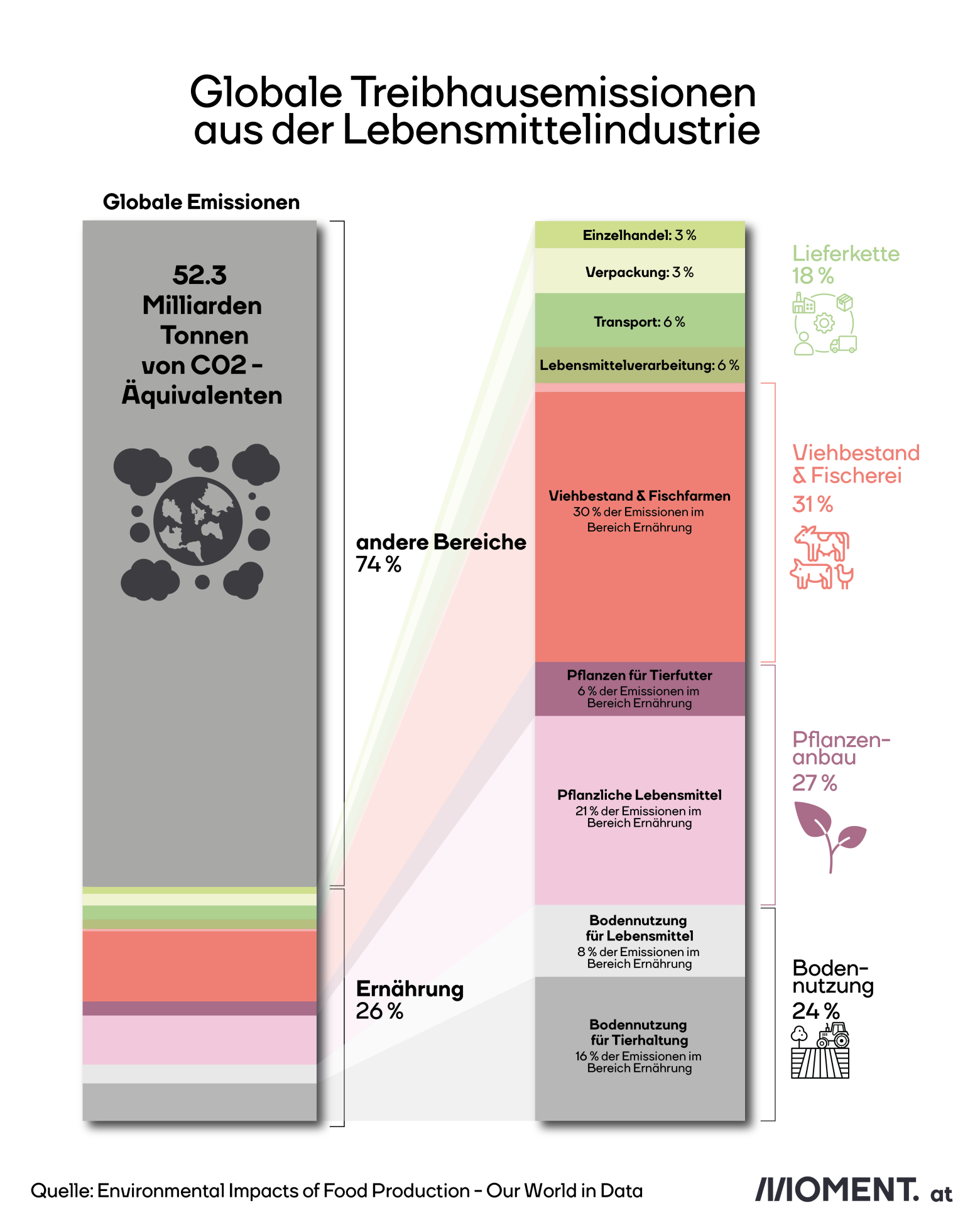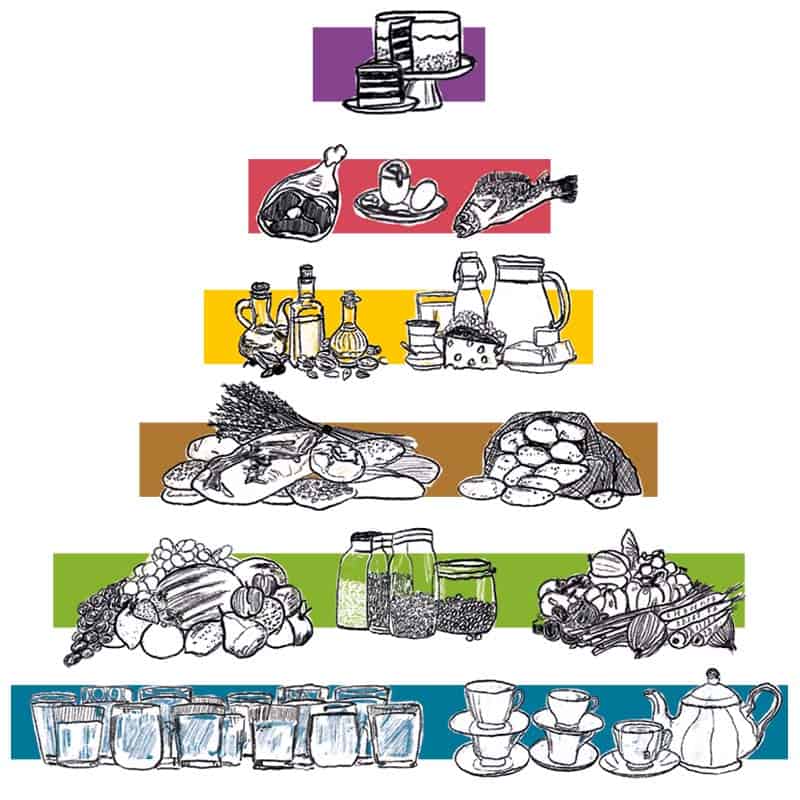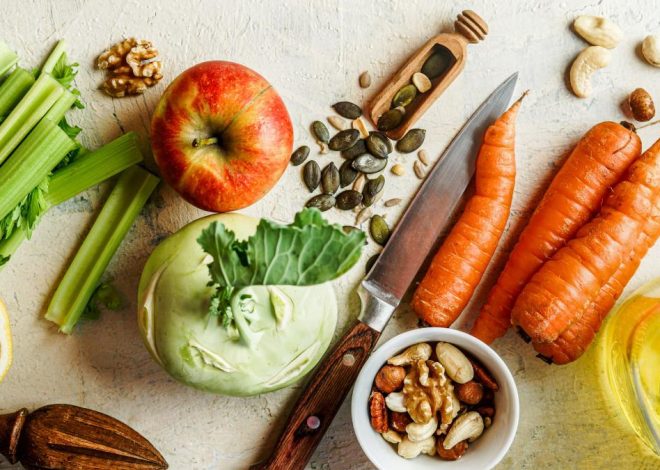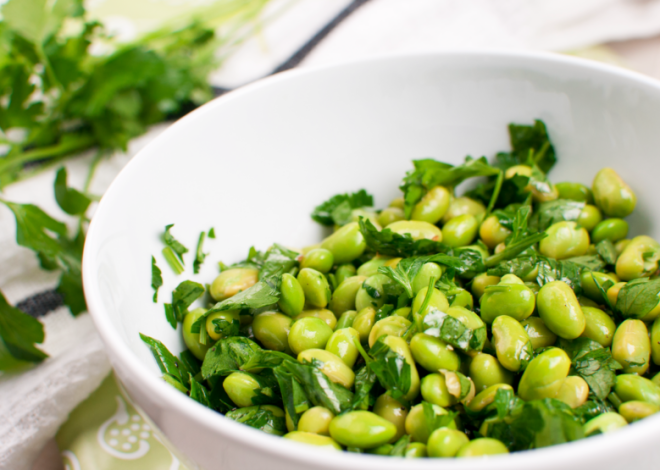
Does Austria need a new food pyramid?
How much meat, milk and fruit is healthy? The food pyramid is our guideline for this. But critics say it is outdated. It is harmful to health and the environment. Germany has therefore already adjusted its nutritional recommendations. What about the food pyramid in Austria?
I grew up in the country. Really in the country. In a village where there are more chickens than people. Much more. As a child, I ran around the stables among the chickens, cows and pigs. The fact that they were all slaughtered and eaten seemed completely normal. Nothing to question. Until I did it at the age of 13 and became a vegetarian.
During my last visit home to this village of cows and chickens, an episode of “Am Schauplatz” was broadcast on ORF. The topic: life without schnitzel. “Not just a question of taste, but almost a question of faith,” wrote ORF.
What would Austria be without schnitzel?
Among other things, a landlord who regularly hosts “schnitzel parties” was given a voice. When asked what Austria would be without schnitzel, he replied: “Then there would be no Austria.”
Austria would probably still exist. But the gentleman is right in answering the next question – what would happen if we gave up schnitzel for the sake of the climate: “I think there would be a big uproar.”
According to Statista, every Austrian eats around 59 kilograms of meat per year. Too much. The Austrian Society for Nutrition (ÖGE) recommends a maximum of 23.4 kg for health reasons.
WHO: Red meat “probably carcinogenic”
Too much meat increases the risk of diseases such as diabetes, colon cancer or chronic inflammation. World Health Organization WHO (World Health Organisation) classified processed meat as definitely carcinogenic and red meat as probably carcinogenic back in 2015. But the amount of meat is not only a problem for the health of meat eaters. It affects everyone.
77 percent of the agricultural land are needed for meat – for growing feed, pastures and stables. Although meat only covers 18 percent of people’s global calorie needs.
This also means that particularly important natural areas such as forests and moorlands are being destroyed. These are important as CO₂ sinks in the fight against the climate crisis.
Climate killer schnitzel
The fact that such areas are being destroyed in agriculture has a very bitter aftertaste. Around a quarter of all greenhouse gas emissions are attributable to our diet. 61 percent of these are caused by land use, animal feed and fishing. The rest comes from food production directly for human consumption, processing, transport, packaging and trade.

26 percent of all emissions come from the food sector.
One kilo of apples causes an average 0.4 kg CO2 equivalents. One kilo of corn produces 1.0 kg of CO2 equivalents, while peas produce 0.9 kg. One kilo of beef, on the other hand, produces 60 kg and milk 3 kg of CO2 equivalents.

Animal foods such as meat, cheese and milk tend to cause more emissions than animal foods.
We are devouring the 1.5 degree target
Emissions from our diet alone will push us above the 1.5-degree limit that nations agreed to in the Paris Climate Agreement in 2015. Our diet today is therefore not sustainable.
Meat and other animal products contribute to the climate crisis, species extinction and the pollution of air, water and soil.
However, our diet also has a lot of potential to protect the climate and the environment. If we change it. The Austrian authorities have also recognized this. They are working on a new food pyramid.
What is the food pyramid?
The food pyramid is a food-based recommendation for people in Austria. It was developed by the working group of the Supreme Health Council (OSR) “Public Health – Nutrition”. Since March 2010 it has served as a nutritional medical and nutritional science recommendation.
How is the food pyramid structured?
The food pyramid consists of seven groups: six food groups and one beverage group. The further down the pyramid a food is, the more often it should be consumed.
What does the food pyramid recommend?
At least 1.5 liters of liquid daily – preferably water, mineral water, unsweetened teas or diluted fruit and vegetable juices.
Three portions of vegetables or pulses such as beans, lentils or tofu and two portions of fruit daily. Four portions of cereals, bread, pasta, rice or potatoes. Three portions of dairy products daily. One to two tablespoons of vegetable oils, nuts or seeds daily.
Meat three times a week, one to two portions of fish and a maximum of three eggs. Only rarely eat foods high in fat, sugar or salt. This is the current nutritional recommendation in Austria.

A new food pyramid is currently being worked on for Austria. Until then, the old nutritional recommendations will apply.
Too many animal products: The Austrian food pyramid is outdated
This recommendation has been criticized for some time. It contains too many animal products, which are particularly harmful to the climate. This is no longer up to date. “Neither healthy nor climate- and nature-friendly,” says the environmental organization WWF.
“How do the recommendations of the Austrian food pyramid need to change so that we put as little strain on the planet as possible?” WWF and the Vienna University of Economics and Business (WU Vienna) got to the bottom of this question.
Based on the concept of planetary boundaries, WU Vienna has developed a corresponding proposal for a new food pyramid 2.0.
The result: fewer animal products. That’s why five portions of grains and potatoes are recommended instead of four. White meat only once a week and red meat every two weeks at most. And dairy products only once a day – instead of three times a day. In addition, coffee, tea and cocoa should only be consumed 1 to 2 times a day instead of 3 times a day.

The WWF criticizes Austria’s current food pyramid and instead recommends the “Food Pyramid 2.0” with fewer animal products.
New food pyramid in Germany: less animal, more plant-based foods
The German Nutrition Society has also revised its nutritional recommendations this year and is trying to take sustainability, environmental impact, health and habits into account.
Therefore, the new recommendation contains at least three quarters plant-based and a maximum of one quarter animal-based foods.
New food pyramid in Austria with fewer animal products is coming
In Austria, too, the nutritional recommendations are currently being revised by the ÖGE. The new food pyramids are to be published this year by the Federal Ministry of Social Affairs, Health, Care and Consumer Protection as a recommendation and for guidance.
i
What types of diets are there?
omnivore: Literally “omnivores” they feed on both plant and animal products such as milk and meat.
Flexitarian: Means that people only eat meat occasionally.
PescetarianPescetarians do not eat meat, but they do eat fish, eggs and dairy products.
Ovo-lacto-vegetarian: No meat is consumed, but eggs and milk and dairy products such as cheese are consumed.
Lacto-Vegetarian: No eggs are consumed, but milk and dairy products are consumed.
Vegan: Vegans avoid all animal products as much as possible.
In general, the proportion of animal products should also be reduced in Austria.
Schnitzel and Austria will still be around. Ideally, the former won’t be as common. Perhaps it will taste even better then.
More on the subject:

Ethel Purdy – Medical Blogger & Pharmacist
Bridging the world of wellness and science, Ethel Purdy is a professional voice in healthcare with a passion for sharing knowledge. At 36, she stands at the confluence of medical expertise and the written word, holding a pharmacy degree acquired under the rigorous education systems of Germany and Estonia.
Her pursuit of medicine was fueled by a desire to understand the intricacies of human health and to contribute to the community’s understanding of it. Transitioning seamlessly into the realm of blogging, Ethel has found a platform to demystify complex medical concepts for the everyday reader.
Ethel’s commitment to the world of medicine extends beyond her professional life into a personal commitment to health and wellness. Her hobbies reflect this dedication, often involving research on the latest medical advances, participating in wellness communities, and exploring the vast and varied dimensions of health.
Join Ethel as she distills her pharmaceutical knowledge into accessible wisdom, fostering an environment where science meets lifestyle and everyone is invited to learn. Whether you’re looking for insights into the latest health trends or trustworthy medical advice, Ethel’s blog is your gateway to the nexus of healthcare and daily living.



